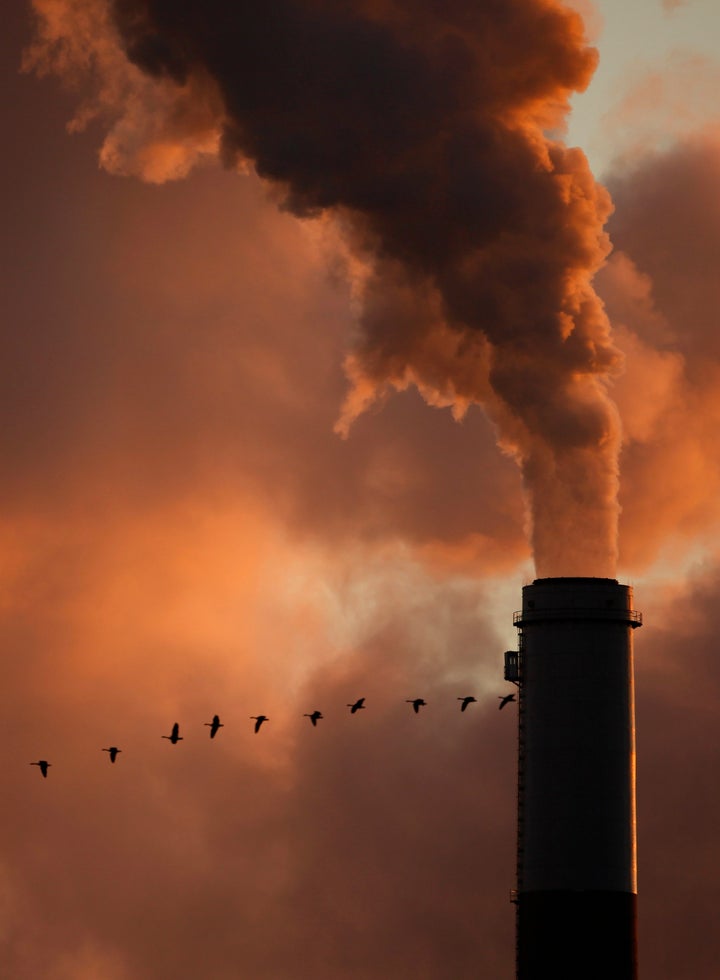
You had to read past the jump from the front page to the inside of the paper to find some of the more obscure points in the budget-cutting deal that avoided a government shutdown a few weeks ago. For those of you who never handle newspapers, I guess you had to scroll wayyyyyy down the web page to find cuts in job training for home energy retrofitting, high-speed rail, and other inducements for new pollution-cutting technologies.
Don't misunderstand me. I'm well aware that the federal government is spending far more money than it collects, and millions of regular people think it's time to start addressing that. The interesting notion, to me at least, is that a country short of money might save some by cutting the Environmental Protection Agency's enforcement budget. That approach can only come from a belief that the effects of dirty air, water, and soil have no cost.
For Latinos, pollution has a tremendous cost. Two out of three Latino families live in places where the air does not meet Clean Air Act standards. Latinos also have high rates of asthma and cardio-pulmonary disease. The lost days of work, the marginally lower levels of productivity for workers with a chronic illness, the reduced years of life are all difficult things to cost out when trying to create a balance sheet for pollution. It's extremely easy to measure the cost of, let's say, forcing electric power plants to start investing in technology that allows utilities to move away from coal.
Coal is dirty. Period. Politicians and industrialists get all dreamy when they use the phrase "clean coal technology," but there's just no getting around the fact that even though its relatively cheap, and relatively plentiful, coal is also relatively dirty to burn. A few big electricity companies can already see the sooty writing on the wall and are planning for a post-coal future. Many others are slow-walking change, keeping pressure on their local members of the House and Senate, and pleading high cost, hoping no one will force them to change.
Poor people live downwind from factories and power plants. They live near highways and Superfund Sites. Members of congress don't immediately take their calls, and the added costs they bring to society in the form of emergency room visits with kids having asthma attacks rarely get added to the cost analysis of pollution. On this week's Destination Casa Blanca, environmental advocates told me Latinos have told public opinion researchers they are willing to pay a little more for products, work to save energy, and take other measures to reduce pollution and lessen health effects.
But the cutbacks in government investment in urban light rail systems and high-speed rail between cities always brings a debate over core values in its wake: will private industry invest in research and development into energy-saving and pollution-reducing technologies without that government subsidy? Or is the government subsidy a necessary up-front cost that creates innovative technologies that private business then turns into profitable industries?
How you ... yes you ... answer that question will determine what you make of these budget cuts. Subsidy opponents maintain that if its worth doing, private business will do it without having to get free money from the federal government. Subsidy supporters point out that time and again federally supported research was a vital ingredient in taking ideas from the drawing board to industrial scale.
Thousands of unemployed and under-employed Latino construction workers have been sidelined by a stubborn housing crisis that may get worse before it improves. Many of their skills could immediately be used making already existing houses more energy-efficient. Job training programs to prepare workers to repair and insulate homes were cut along with many other anti-pollution programs. Right now many of these workers are net recipients of taxpayer aid, supporting their families with unemployment and other government payments.
Should the government borrow money to pay unemployment benefits? Or should that same government put a worker in a retraining scheme instead, paying him or her money with the expectation of getting some of that money back from enhanced income taxes paid by a newly employed worker? In the end, you still had to borrow the money ... but not all borrowing is the same. A new bridge that reduces wasted hours in traffic by the thousands pays you back even if you don't put up a tollbooth.
Some of our guests wondered if these cuts were the shape of permanent things to come. In other words, if and when times improved, would the Federal government be able to return to some of the programs eliminated to solve the budget crisis? Or, as is more likely, that getting cut during this straitened era make it more likely that cuts will be permanent?
As always, I invite you to watch excerpts of Destination Casa Blanca online, and talk back to your computer. Argue with me, or blow me a kiss ... let me know what's on your mind.